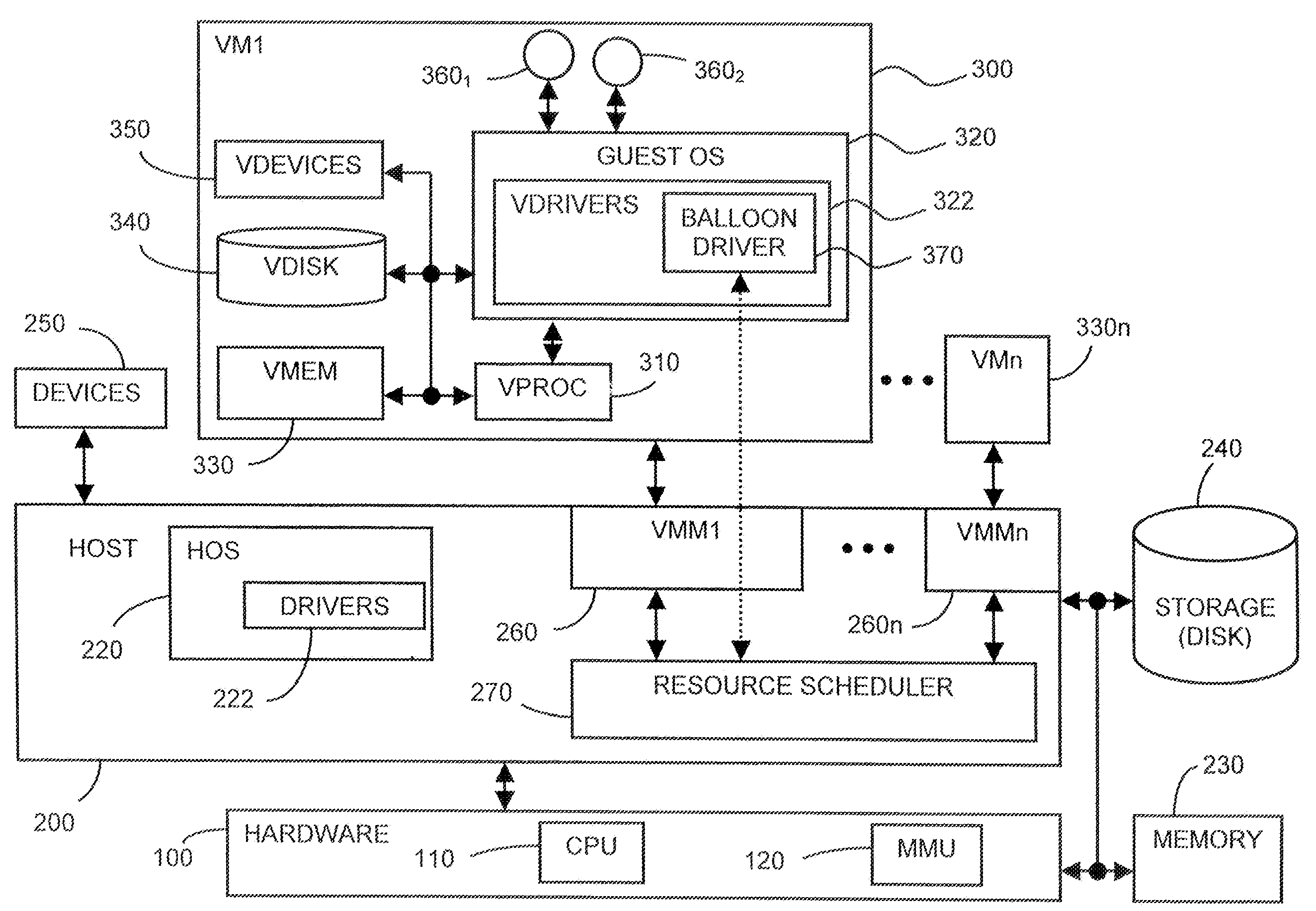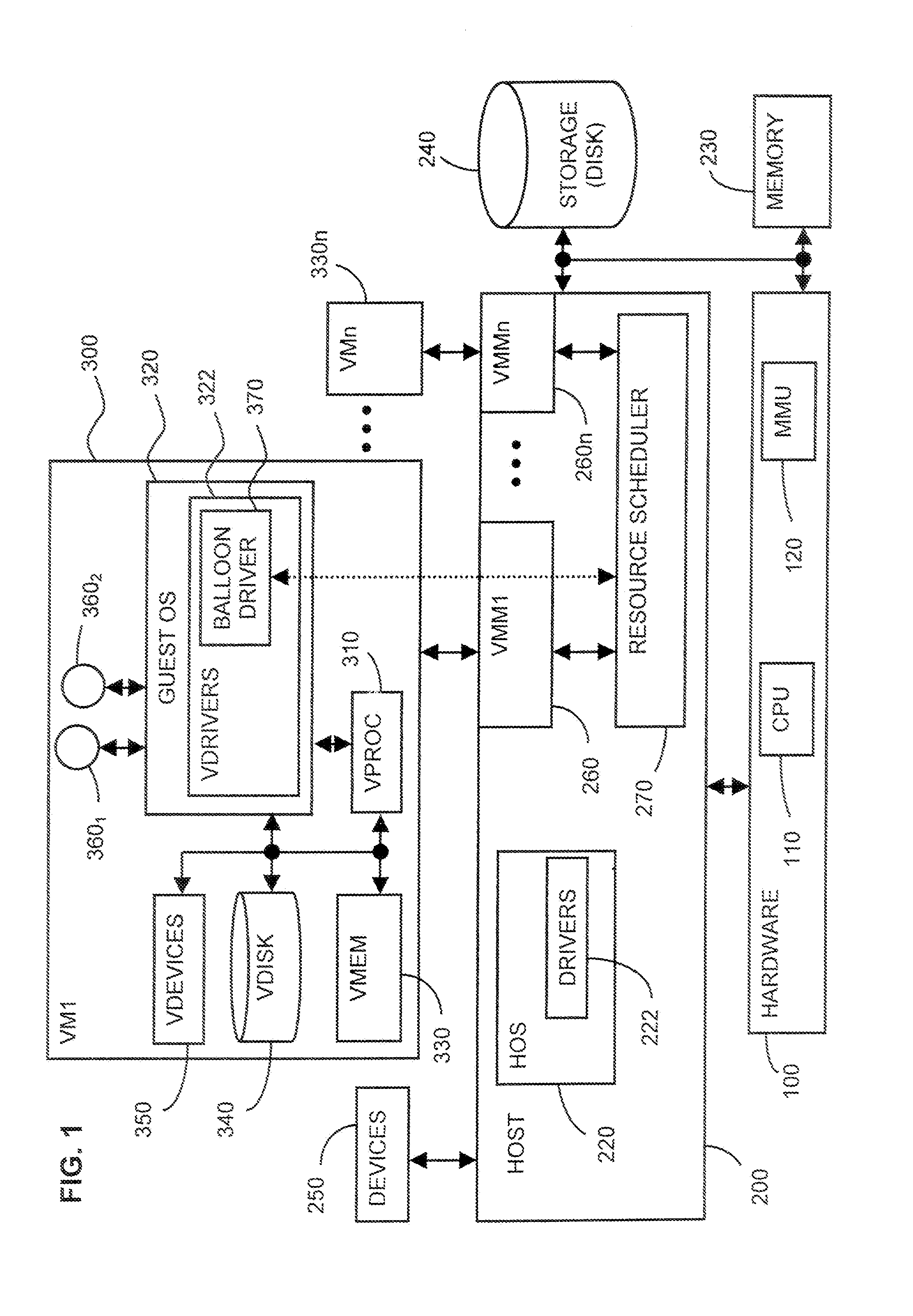System and method for controlling resource revocation in a multi-guest computer system
a computer system and resource revocation technology, applied in the field of computer operating systems, can solve the problems of revocation errors, requests exceeding the bandwidth of the device, and graphics-intensive applications that typically require much more available memory, and achieve the effect of efficient allocation of other resources
- Summary
- Abstract
- Description
- Claims
- Application Information
AI Technical Summary
Benefits of technology
Problems solved by technology
Method used
Image
Examples
Embodiment Construction
[0035]The main idea of this invention is a unique way for the host system to allocate a limited resource among different guest systems that are connected to the central, host system and must share the limited resource. According to the invention, a mechanism is included within the guest system that claims (reserves) the resource within the guest, and then makes the claimed resource available to the host system. As is mentioned above, examples of such a resource include CPU time, I / O bandwidth, processors in a multi-processor system, and memory space. Because it will be the most common case, the resource to be managed is assumed below to be the system memory, which, since it is an actual hardware component, may also be referred to as the “machine memory.” The concepts and software mechanisms described below apply equally, however, to the management of other resources and any modification, if needed at all, will be obvious to those skilled in the art of software engineering. These con...
PUM
 Login to View More
Login to View More Abstract
Description
Claims
Application Information
 Login to View More
Login to View More - R&D
- Intellectual Property
- Life Sciences
- Materials
- Tech Scout
- Unparalleled Data Quality
- Higher Quality Content
- 60% Fewer Hallucinations
Browse by: Latest US Patents, China's latest patents, Technical Efficacy Thesaurus, Application Domain, Technology Topic, Popular Technical Reports.
© 2025 PatSnap. All rights reserved.Legal|Privacy policy|Modern Slavery Act Transparency Statement|Sitemap|About US| Contact US: help@patsnap.com


